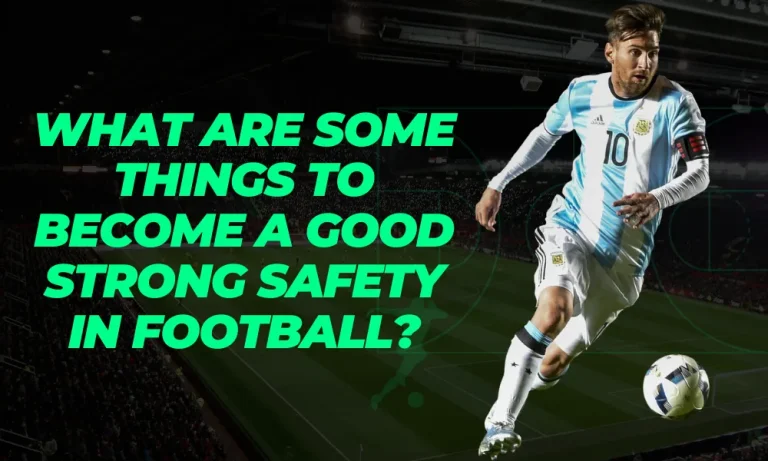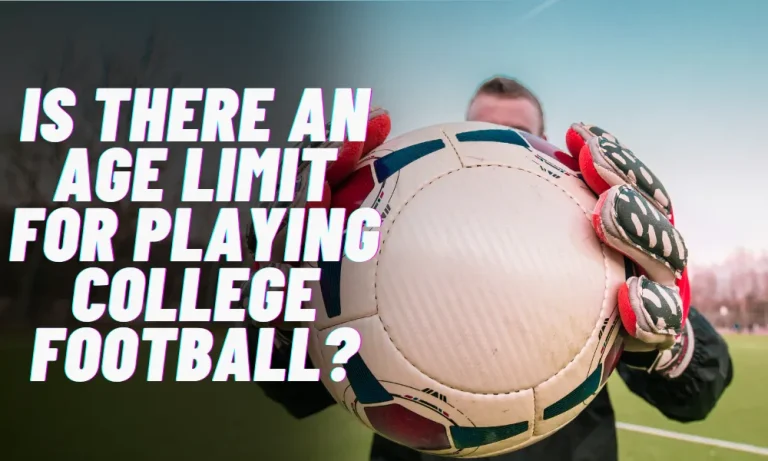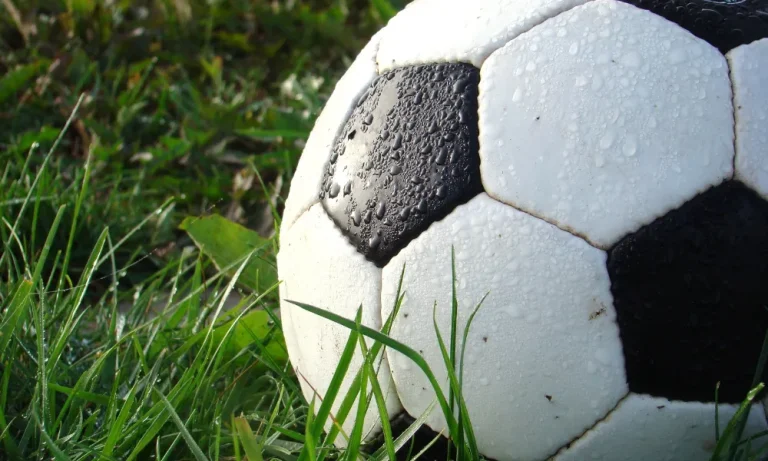Soccer vs. Basketball: Which Sport Takes More Out of You
Are you ready to settle the age-old debate of which sport takes more out of you: soccer or basketball? Whether you’re a fan or a player, it’s time to delve into the physical demands of these two popular sports. Lace up your sneakers and get ready to discover the truth behind the energy and effort required in soccer and basketball.
The Nature of Soccer and Basketball
Soccer and basketball are two vastly different sports, each with its own unique set of rules, objectives, and gameplay. Let’s start by exploring the fundamental aspects of soccer.
In soccer, the objective is simple: score more goals than the opposing team. Played on a rectangular field, teams aim to maneuver the ball into the opposing team’s goal using any part of their body except their arms and hands. The game consists of two halves, each lasting 45 minutes, with the team scoring the most goals declared the winner. Soccer is known for its continuous flow, as players pass, dribble, and shoot the ball with precision and skill.
On the other hand, basketball is a fast-paced, high-scoring game that revolves around putting the ball through the opposing team’s hoop. Played on a rectangular court, teams aim to outscore their opponents by shooting the ball into the hoop while adhering to specific rules. The game consists of four quarters, each lasting 12 minutes. Players use their hands to dribble, pass, and shoot the ball. Basketball emphasizes teamwork, as players strategize and execute plays to create scoring opportunities.
Both soccer and basketball require players to understand and apply various rules. From offside and fouls in soccer to violations and shot clock in basketball, players must navigate these regulations while maintaining focus and making split-second decisions.
Physical Demands of Soccer
When it comes to the physical demands of soccer, endurance plays a crucial role. Throughout a match, players engage in continuous running and sprinting, covering vast distances on the field. From chasing after the ball to making runs into open spaces, soccer requires a high level of cardiovascular fitness and stamina. Endurance training, such as long-distance running and interval training, helps players build the necessary stamina to last the full 90 minutes.
In addition to endurance, soccer also demands a mix of aerobic and anaerobic fitness. The aerobic aspect refers to the body’s ability to utilize oxygen efficiently during sustained physical activity, while the anaerobic aspect focuses on short bursts of intense effort. Soccer involves both aspects, as players engage in steady running for extended periods while also performing quick sprints, bursts of acceleration, and sudden changes in direction.
Agility, balance, and coordination are vital in soccer. The ability to change direction swiftly, maintain balance while dribbling, and coordinate movements with teammates is essential for success on the field. These skills allow players to evade defenders, maintain possession of the ball, and execute precise passes and shots. Regular practice drills that focus on agility, balance, and coordination can enhance these abilities and improve overall performance.
Physical Demands of Basketball
Basketball is a dynamic sport that demands a wide range of physical abilities. One of the key aspects of basketball is the frequent changes in speed and direction. Players must be able to accelerate quickly, decelerate suddenly, and change directions rapidly to outmaneuver opponents. This requires a high level of agility, as well as the ability to react swiftly to the ever-changing flow of the game.
Explosive movements are also a significant component of basketball. Players perform actions such as jumping for rebounds, sprinting down the court on fast breaks, and executing quick lateral movements to defend or evade defenders. The ability to generate power and explosiveness in these movements is crucial for success in the game. Strength and plyometric exercises can help players enhance their explosive capabilities.
Cardiovascular fitness is essential in basketball due to the fast-paced nature of the sport. Players constantly move up and down the court, engaging in both aerobic and anaerobic activity. A strong cardiovascular system allows players to maintain a high level of endurance throughout the game, enabling them to keep up with the fast tempo and perform at their best.
Agility is another vital aspect of basketball. It involves the coordination of balance, quickness, and body control. Agile players can swiftly change direction, evade defenders, and execute precise movements on the court. Regular agility drills and exercises can improve a player’s ability to move efficiently and effectively during gameplay.
Injury Risk in Soccer and Basketball
When it comes to the risk of injuries, both soccer and basketball carry their own set of potential hazards. While the nature of the injuries may differ, both sports require physical contact and involve high-intensity movements, increasing the likelihood of injuries.
In soccer, common injuries include sprains, strains, and fractures. Due to the continuous running and sudden changes in direction, players are susceptible to ankle and knee sprains. Overuse injuries, such as tendonitis and stress fractures, can also occur from repetitive motions. Additionally, collisions and falls during aerial challenges can lead to concussions and fractures.
In basketball, similar injuries can occur, but with some variations. Ankle sprains are prevalent due to the frequent jumping and quick changes in direction. Knee injuries, including ligament tears, can also happen during pivoting or landing awkwardly. Fractures, particularly in the wrist or fingers, can result from contact with other players or falls to the ground.
Both sports carry potential long-term effects. Repeated joint injuries can lead to chronic pain, arthritis, and decreased mobility later in life. Head injuries, such as concussions, can have lasting effects on cognitive function if not managed properly. It’s crucial for players to prioritize proper warm-up, conditioning, and technique, along with following safety guidelines, to minimize the risk of injuries and their long-term consequences.
Mental and Psychological Factors
The mental demands and psychological aspects play a significant role in both soccer and basketball. These sports require not only physical skills but also mental agility and strategic thinking to excel on the field.
Quick decision-making is essential in both sports. Players must analyze the situation, anticipate their opponents’ moves, and make split-second decisions on whether to pass, shoot, or dribble. This requires mental alertness and the ability to process information rapidly. Strategic thinking is also crucial, as players need to understand the game’s dynamics, anticipate plays, and adapt their strategies accordingly.
Teamwork is a vital psychological aspect in both soccer and basketball. Effective communication, trust, and cooperation among teammates are essential for success. Players must work together, support each other, and understand their roles within the team. This fosters a sense of unity and enhances overall performance.
High-pressure situations can have a significant psychological impact on players. In soccer, penalty shootouts or crucial moments in a match can create immense pressure. Similarly, basketball players face intense pressure during free throws or last-second shots. The ability to remain focused, control emotions, and make sound decisions under pressure is crucial. Mental resilience and strong psychological skills can help players cope with stress and perform at their best when it matters most.
Which Sport Takes More Out of You?
When comparing the physical and mental demands of soccer and basketball, it’s important to consider various factors such as overall energy expenditure, intensity, and duration of matches. Both sports require significant physical and mental effort, but the extent may vary depending on individual variations and preferences.
In terms of energy expenditure, soccer tends to be more demanding. The continuous running, sprinting, and frequent changes in direction require a high level of cardiovascular fitness. The longer duration of soccer matches, typically 90 minutes, means players need to maintain their energy levels throughout the game. On the other hand, basketball involves shorter bursts of intense activity, with frequent stops and starts. The fast-paced nature of the game requires quick bursts of energy and agility.
In regard to mental demands, both sports require concentration and decision-making. However, soccer often demands more strategic thinking due to its larger playing field and the need to adapt to different game situations. Basketball, on the other hand, requires quick decision-making in a more confined space, with players needing to analyze the game and make split-second choices.
Individual variations and preferences also come into play. Some individuals may find soccer more physically demanding due to the continuous running, while others may prefer the quick, explosive movements in basketball. Similarly, some may enjoy the strategic aspects of soccer, while others thrive in the fast-paced, high-scoring nature of basketball.
Conclusion
In the ultimate battle between soccer and basketball, the question of which sport takes more out of you remains subjective. While soccer demands higher overall energy expenditure and strategic thinking, basketball focuses on intense bursts of energy and quick decision-making. Individual variations and preferences also play a significant role in determining the perceived demands of each sport.
Ultimately, both sports offer unique physical and mental challenges that contribute to the enjoyment and satisfaction of athletes.
FAQs
How do the overall energy expenditures compare in soccer and basketball?
Soccer generally requires higher overall energy expenditure due to continuous running, while basketball involves intense bursts of energy.
Which sport demands more cardiovascular fitness?
Soccer demands more cardiovascular fitness due to the longer duration and continuous running involved.
What are the mental demands of soccer and basketball?
Soccer requires strategic thinking, while basketball demands quick decision-making.
Which sport has a longer duration of matches?
Soccer matches typically last 90 minutes, while basketball games are shorter in duration.
Are there individual variations in the perceived demands of each sport?
Yes, individual variations and preferences play a significant role in determining the perceived demands of soccer and basketball.
Which sport offers a more fast-paced and high-scoring environment?
Basketball provides a more fast-paced and high-scoring environment compared to soccer.





